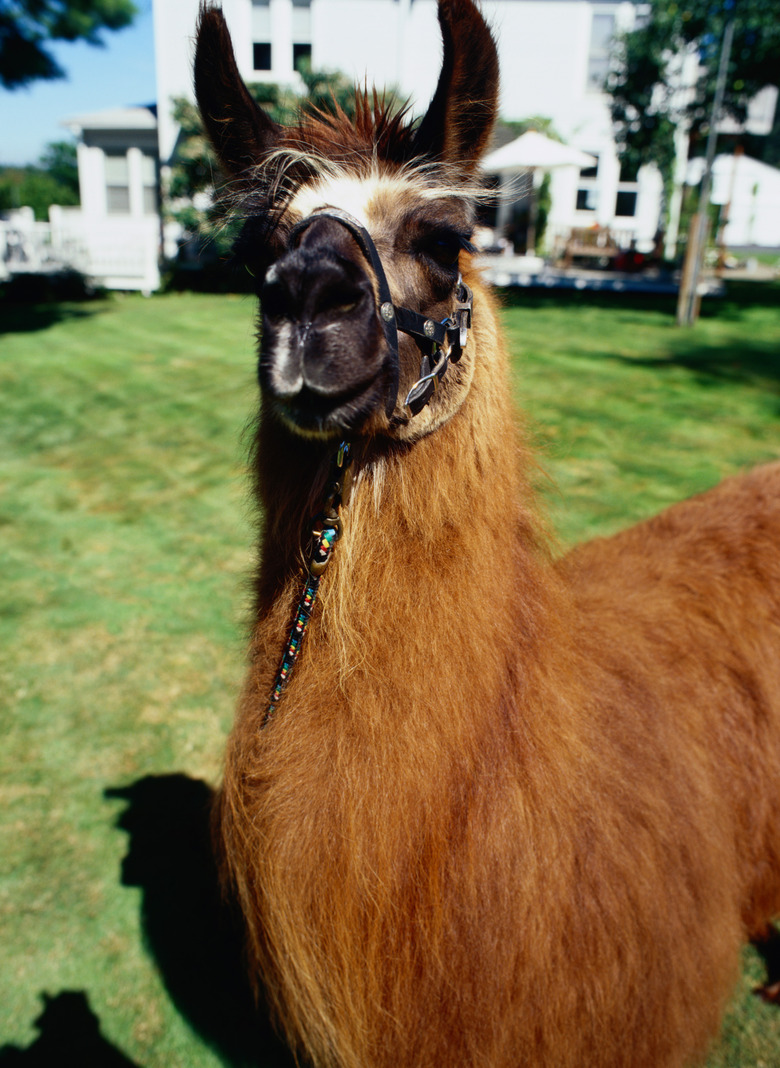What Occurs When The Zygote Has One Fewer Chromosome Than Usual?
It is a long and winding road from conception to birth. Organisms undergo a tremendous amount of development. Sometimes, though, a problem occurs when genetic information is passed along from the parents. In humans, about 1 in 150 infants has a chromosomal irregularity. If a chromosome is entirely missing, development is often cut short. Sometimes the offspring can survive, although it may face many struggles.
The Basics of Babies
The Basics of Babies
Many animals and plants share their genetic information, found in chromosomes, during sexual reproduction. Gametes — the mother's egg and father's sperm — combine to form a fertilized egg, also known as a zygote. Half of a zygote's chromosomes come from each parent. Different organisms have varying numbers of chromosomes. For example, a human cell typically has 23 pairs, for a total of 46. Dog cells have 78, while corn cells have 20. Sometimes the zygote does not receive the correct number of chromosomes. For instance, one can be entirely missing.
Missing Pieces
Missing Pieces
A zygote can end up with one fewer chromosome than normal — monosomy — because one of the fertilizing gametes was missing a chromosome. This deletion, called nondisjunction, happened while the gamete was forming. In humans, this means that the zygote winds up with 45 chromosomes. One fertilizing gamete had 23, while the other had 22. Most of these zygotes do not live for long. In a few cases the offspring survives, although it may have abnormalities.
In Humans
In Humans
A human zygote will not survive if it is missing a chromosome, unless it is one of the sex chromosomes. Otherwise, too much genetic information is absent. A female typically gets an X chromosome from each parent. Males receive an X from the mother but a Y from the father. The X chromosome is large and carries so many genetic instructions that a zygote cannot survive without it. Therefore, no zygote survives with only a Y chromosome. However, a female might live with only one X, but she will have Turner syndrome. Females with this genetic disorder are often much shorter than average. Their reproduction systems either fail to develop or develop incompletely. They may also have skeletal, skin, heart and kidney abnormalities.
Other Organisms
Other Organisms
Monosomy is possible in other mammals, such as horses. In fact, this is the most common chromosomal defect in these animals. It is very similar to Turner syndrome: mares with this disorder are small for their age and cannot reproduce. On the other hand, female laboratory mice, field mice and mole rats can reproduce normally even if one of their X chromosomes is missing. Although monosomy often prevents plants from developing, scientists have engineered tomatoes and maize plants with one missing chromosome.
References
- March of Dimes: Chromosomal Abnormalities
- Ohio University: Chromosomes and Plant Reproduction
- Purdue University: Human Chromosomal Disorders
- HudsonAlpha Institute for Biotechnology: Chromosome Abnormalities
- Nature: Scitable: The Sex of Offspring Is Determined by Particular Chromosomes
- U.S. Department of Energy: Ask a Scientist: Too Many or Few Chromosomes
- NLM: Genetics Home Reference: Turner Syndrome
- University of California–Davis: Veterinary Medicine: Horse Karyotyping
Cite This Article
MLA
Sherwood, Susan. "What Occurs When The Zygote Has One Fewer Chromosome Than Usual?" sciencing.com, https://www.sciencing.com/occurs-zygote-one-fewer-chromosome-usual-17818/. 24 April 2017.
APA
Sherwood, Susan. (2017, April 24). What Occurs When The Zygote Has One Fewer Chromosome Than Usual?. sciencing.com. Retrieved from https://www.sciencing.com/occurs-zygote-one-fewer-chromosome-usual-17818/
Chicago
Sherwood, Susan. What Occurs When The Zygote Has One Fewer Chromosome Than Usual? last modified August 30, 2022. https://www.sciencing.com/occurs-zygote-one-fewer-chromosome-usual-17818/
